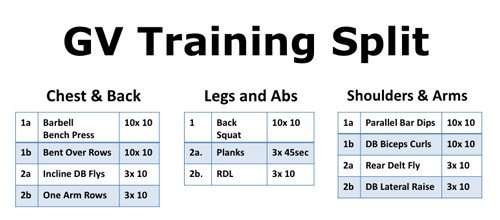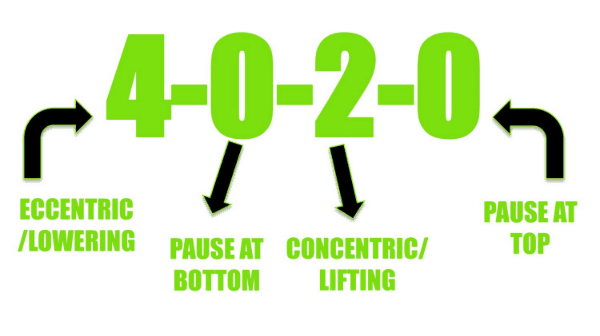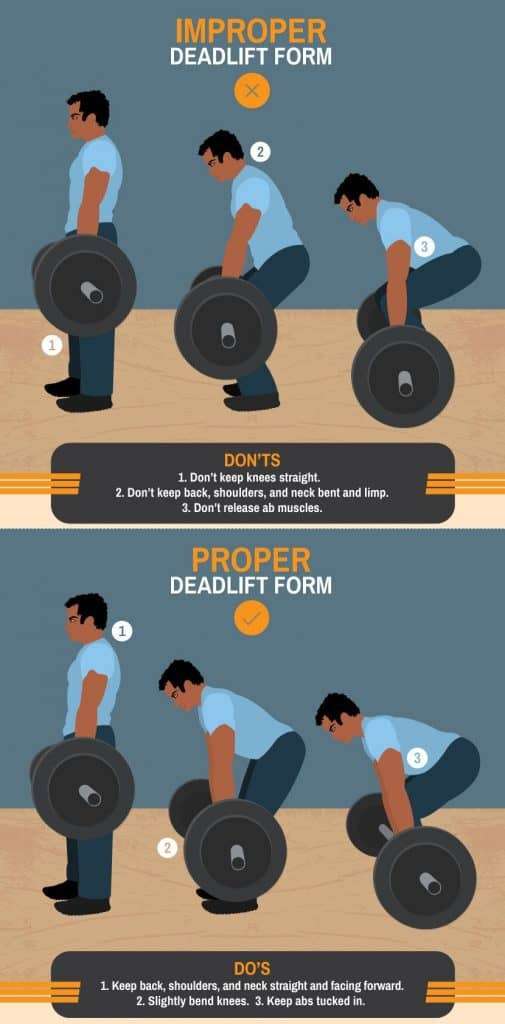GVT. The Unicorn of the hypertrophy world. The proverbial ‘Golden Ticket’ to the gains factory. It’s a program known for its brutal punishment of the muscles involved. German Volume Training, GVT, isn’t something for the weak of heart.
German Volume Training, also known as GVT, has a reputation. You might have heard it called by other names like the “10-Sets Method” or “10×10.” Others simply call it pain. It works. And not just that, it works really effectively. Major athletes stand by this method, and for a great reason. The secret sauce lies in how it’s designed.
GVT’s whole purpose is to increase your muscle size, and it’s pretty good at its job. It does this by encouraging a lot of volume in your workouts that really put your muscles to work. What makes it stand out is its intensity and the sheer volume of workout it includes. On paper it looks easy, but looks are incredibly deceiving.
Most newer people around the gym have never heard about GVT, and it’s usually reserved for more advanced lifters, but if your goal is to get as big as possible, as quickly as possible, GVT might be for you. Especially if you hit a plateau and just need a way to smash through it.
That is, if your body is already conditioned to the stress of working out regularly, and are able to complete the program.
Volume Training
Let’s journey back in time to the fitness movement that started in the 1970s. In the heart of Germany’s gyms, volume training was conceived, particularly German Volume Training (GVT), which has since become a cornerstone of fitness history.
German coaches discovered that by increasing the volume of exercise—increasing the number of exercise repetitions—their athletes began building muscle at an accelerated rate. This(to us obvious) realization paved the way for the birth of German Volume Training.
So, what distinguishes volume training? It essentially concentrates on multiplying the number of repetitions for each exercise, crafting an intensive workout. In German Volume Training, you perform 10 sets of 10 repetitions per exercise. It’s an intense workout that pushes every limit!
High repetition exercises like this puts considerable stress on your muscles, instigating a rapid growth response. This is why volume training, GVT in particular, quickly caught the attention of athletes and fitness enthusiasts who wanted to build muscle mass as fast as possible. To this day people still do it because it works.
Shocking
Honestly, GVT is shocking. The first two weeks or so are comparatively “easy.” Don’t get me wrong, they are grueling workouts, but the body can generally handle it. Then, week three hits and everything changes. You want to stop. Your body wants you to stop. The gym loses its appeal. Life hurts. Overall, it gets miserable.
Thankfully, the results start to show up about two weeks in, helping to push you along. By the end of week 4, the results are honestly shocking.
Volume training is an intense workout regimen that was developed to provide noticeable results, quickly. An incredibly simplified explanation of the process is this: Lift a lot of weight, a lot of times, in a short period time, with the same muscle group, with a single exercise, and watch the muscle grow.
It does not come easy by any means, and you will feel like quitting quite a few times, but keep on and you’ll be shocked and amazed at what happens at the end of an eight week cycle.
The Basics
Most gym bros or trainers will set you up with “boring”, canned workouts consisting of 3-5 sets with 8-10 reps each. They will probably give you 5-6 exercises to do as well.
GVT is in a completely different realm than those workouts, and it’s exactly what it sounds like: high volume. Nothing fancy. No awkward movements. Just you and the bar for 100 solid reps of heavy weight.
Instead of the traditional setup of 5 or 6 exercises with 8-10 reps each, you do 10 sets of 10 reps of a single exercise per session. That’s it. Sounds easy, but it hurts.

If you like pain, you could follow that up with one or two isolation exercises targeting the same muscle group. For example, if you finish your 100 reps on the bench, you could follow it with 3-5 sets/8-10 reps of flyes or pull overs, using a medium weight. You will already be torched, and the additional sets will put you over the edge.
It Gets Better
How much you put on the bar during GVT is different than what you might use for regular session. Endurance workouts generally have you using lighter weights and lots of reps. Strength athletes pile on as much weight as they can for just a few reps at a time.
You don’t want to do either for GVT. Aim for 60-65% of your 1 Rep Max and stick to it the entire time. That means if your maximum bench press is 175lbs, you want to bring that down to about 105lbs.
Ideally, anything you lift should be somewhere that you could do 3-4 sets of 20 straight reps.
If you hit a point where you can’t continue, drop the weight 2.5-5lbs and try again. The key is to finish all 100 reps with as little aid as possible and without dropping weight too much.
There’s more
If you are one of those people who enjoy a challenge, it keeps getting better. What makes this even harder is that you only have between 60-90 seconds to rest between each set. Rest time depends on how much of a challenge you want, but don’t go less than 60 or more than 90 seconds between.
That means there is no walking around and sipping on water. You have to focus the whole time. By the time you hit the back end of the sets, that minute to 90 seconds will fly by and you won’t want to finish. But you will because that’s what winners do.
Need some help?
Shape Success, Live Exceptionally
Hit that button, and get started today.
Tempo
In weight training, like in music, there is a rhythm, or tempo, that should be followed for ideal results. Playing a sheet of music too fast or two slow can drastically alter the song. Similarly, the tempo you use during strength training can make or break your progress.
Your muscles grow under stress, and the longer they are under stress the better your progress will be. Of course, if they are under stress for too long you risk injury at worst and fatigue at best before you finish the set. The key lies in a good balance.
That tempo changes based on goal, muscle group, and exercise type. As a general rule for GVT:
- For long range movements such as squats, deadlifts, chin ups, or dips, use a 4x0x2x0 tempo.
- For movements that are short range like bicep curls or incline rows, use a 3x0x2x0 tempo.
You are probably wondering what those numbers mean. It’s simple. Take the traditional bench for example:
- The first number is the time spent lowering the barbell from fully extended to your chest.
- The second number is how long you rest when you hit full range of motion for the muscle.
- The third number is how long it takes you to extend back to the starting position.
- The fourth number is how long you rest before starting the next repetition.

Following a 4x0x2x0 tempo for squats, you would take four seconds to lower yourself into the squat, keeping control the entire time, have absolutely no hesitation once in the squat position, and return to standing position within the next two seconds. Then you repeat the process without hesitation at the top.
Schedule
Because this strategy is so intensive, it’s recommended to work out 4-5 days a week and take at least 2 rest days per week. Make sure that you’re keeping your muscle focus days as far apart as the week allows. This is very hard on the muscles and doing two arm days in a row, for example, could (read: will) lead to injury.
Try a workout split like:
- Monday: Chest (10×10 Bench, 3×10 Flys/Pullovers)
- Tuesday: Back ( 10×10 Bent over Rows, 3×10 Reverse Fly/Pullups)
- Wednesday: REST
- Thursday: Legs and Glutes ( 10×10 Squats, 3×10 Deadlift/Kettlebell Swings)
- Friday: Arms and Shoulders ( 10×10 Curls and Overhead Press, 3×10 Shrugs/Pulldowns/Hammer Curls/Skullcrushers)
- Saturday: REST
- Sunday: Start Over
This kind of schedule can help protect your body from harm by giving your muscles time to recover enough between sessions.
Form is Critical
Volume training is considered an advanced training program and because of that, I cannot stress enough how crucial it is to have proper form when you are following this regimen. Putting your muscles under such extreme stress without proper form creates an enormous risk of serious injury. Do not run through this program if you do not understand and have proper form down.
Dead lifts, for example, can be terrible for your back if you aren’t careful. Lifting too heavy without engaging your core or keeping your back straight can slip a disc, pinch a nerve, or worse. A rounded back puts more emphasis on those vertebra, and is just all around bad juju. Of course, everyone is different and most efficient form can look slightly different for different people.

It’s extremely important to listen to your body when you are doing any kind of training. Any body builder or power lifter will tell you there is a difference between burning and hurting.
Your muscles burn when you are working them properly. When you start to feel pain, you’ve done something wrong. You’ll know the difference between the good and bad pains right away. You power through the burn, but you stop at the pain.
Failure to stop can end a gym career very quickly, and people’s form gets sloppy when they are tired. German Volume Training specializes in tired, so be cognizant of form.
Few Tips
It is important to remember that when you are putting your body through this kind of stress, you must be mindful of what you consume and do before and after a workout:
- Make sure you are following proper nutritional guidelines if you want to make any progress. This means having an adequate amount of fuel coming in for your muscles to rebuild themselves and grow. A vital part of this is making sure you consume enough protein to refuel and rebuild your muscles after you tear them apart during your workouts.
- Stay hydrated by drinking plenty of water throughout the day. Your muscles need the hydration to help fight off fatigue, keep them strong, and move vital nutrients into and waste out of your cells.
- Stretch regularly before, during (if needed), and after each workout to help your muscles properly warm up, relax, and recover!
Following these guidelines, you reduce the risk of injuring yourself or burning out quickly.
Try it
Volume Training is a fantastic way to build muscle. As a perk, the increased metabolism caused by the intensity will help you burn off some excess body fat, provided you are eating optimally.
If you are able to commit to German Volume Training for a few weeks, you will see results. With proper nutrition, hydration, form, and consistency, you can have better results. It just takes a some time and a lot of work.
Let Us help You Out
At CONDITIONerd we are here to help you achieve better physical and mental health through exercise. Check out the plans we offer to our customers and see if you could benefit from working with our team. And if you have questions, you can always contact a CONDITIONerd team member.
Personal trainers, like those found here, can help guide you on your pathway towards reaching your fitness goals, whether that is getting bigger, stronger, faster, more lean, or just generally feeling better.
We can get you setup with a periodized workout plan, supplement information, and advice on nutrition to help you reach your goals.
The only thing you need is some motivation and a willingness to change some old habits.
Get into contact with us to find out what membership is right for you. In a CONDITIONerd program, you’ll be surrounded by others who can help you to get where you want to be.
Generally, our clients start to see some pretty awesome changes in 2-3 months time, some sooner.


